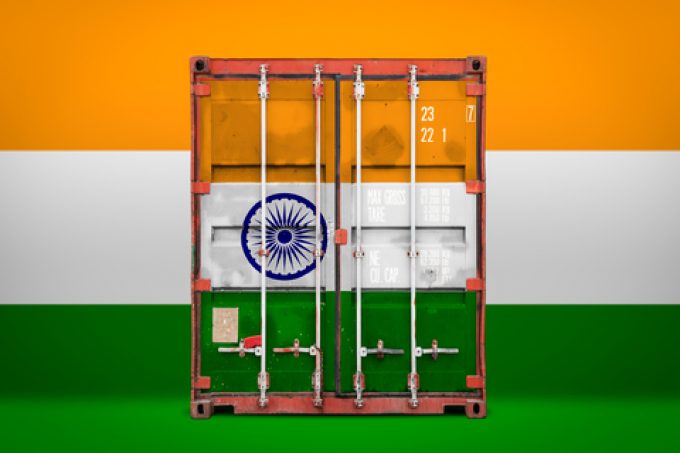Container spot rates have peaked as all major trades see prices fall
There was more evidence in this week’s container port freight markets that peak prices on ...
TFII: SOLID AS USUALMAERSK: WEAKENINGF: FALLING OFF A CLIFFAAPL: 'BOTTLENECK IN MAINLAND CHINA'AAPL: CHINA TRENDSDHL: GROWTH CAPEXR: ANOTHER SOLID DELIVERYMFT: HERE COMES THE FALLDSV: LOOK AT SCHENKER PERFORMANCEUPS: A WAVE OF DOWNGRADES DSV: BARGAIN BINKNX: EARNINGS OUTODFL: RISING AND FALLING AND THEN RISING
TFII: SOLID AS USUALMAERSK: WEAKENINGF: FALLING OFF A CLIFFAAPL: 'BOTTLENECK IN MAINLAND CHINA'AAPL: CHINA TRENDSDHL: GROWTH CAPEXR: ANOTHER SOLID DELIVERYMFT: HERE COMES THE FALLDSV: LOOK AT SCHENKER PERFORMANCEUPS: A WAVE OF DOWNGRADES DSV: BARGAIN BINKNX: EARNINGS OUTODFL: RISING AND FALLING AND THEN RISING

The increasingly steady Indian container market is seeing a flurry of new long-haul services, as ocean carriers deftly redeploy tonnage to improve capacity utilisation and profitability.
MSC’s Asia-US west coast connection, branded Sentosa, will now include calls at Nhava Sheva (JNPT) and Mundra in India, and is the latest example of this evolving industry trend.
It follows the Cosco/OOCL consortium beginning a West India-US east coast routing, after closing a China-Vietnam-US east coast loop and Taiwanese carrier Wan Hai Lines announcing an ad-hoc sailing from Nhava Sheva to Port Klang later this month.
“The deployment of global container fleets is undergoing significant changes due to declining cargo demand in China and falling ocean freight rates,” Bharat Thanvi, co-founder of Mumbai-based digital forwarder Freightwalla, told The Loadstar.
“Over 565,000 teu of capacity has been withdrawn from the Asia-North America and Asia-Europe trade routes,” he said.
He also noted that Hapag-Lloyd recently pulled a China-Germany express connection, while Ellerman phased more tonnage into the more lucrative transatlantic trade. This diversion, according to Mr Thanvi, had seen a 16.2% increase in the transatlantic capacity, accounting for some additional 162,300 teu slots.
“The biggest shift in tonnage has been seen in Middle East and India-related services, with 320,600 teu of fleet capacity added last year, an increase of 11%,” Mr Thanvi added.
The redesigned MSC port rotation is Port Klang, Singapore, Tanjung Pelepas, Laem Chabang, Vung Tau, Da Chan Bay, Shekou, Long Beach, Oakland, Busan, Qingdao, Shanghai, Ningbo, Kaohsiung, Shekou, Singapore, Nhava Sheva, Mundra, Colombo and Port Klang.
Sunil Vaswani, executive director of the Container Shipping Lines’ Association (CSLA), said vessel deployments and port calls would keep changing in tandem with the market dynamics.
“Optimisation of vessel space is obviously one of the key considerations while allocating space (to demand areas), which helps the shipping lines service the trade at large better,” he noted.
Another Mumbai-based liner industry observer told The Loadstar that carriers dipping into the Indian coast could turn more to freight forwarders in order to find “the extra fodder” to fill ships. “It is also most likely that these operators will set flexible, ad-hoc export space allocations out of India.”
At the same time, Indian exporters are facing demand challenges keeping up the strong growth they had early last year. Indian export volumes, by value, declined 12% year on year in December, according to the latest government data.
“The decline in merchandise exports is a reflection of the toughening global trade conditions on account of high inventories, economies entering recession, high volatility in currencies and geopolitical tensions,” said A Sakthivel, president of the Federation of Indian Export Organisations.
“The drop in commodity prices and restrictions on some exports, with a view to stem the price increase in the domestic market, also affected the growth numbers,” he added.
According to the freight marketplace, container lines looking to tap the Indian market have an opportunity to build volumes as US importers increasingly diversify their procurements away from China, towards other South-east Asian regions.
“We are seeing a sourcing market shift and believe this trend will accelerate in the coming months and years.”
You can contact the writer at [email protected].
Comment on this article